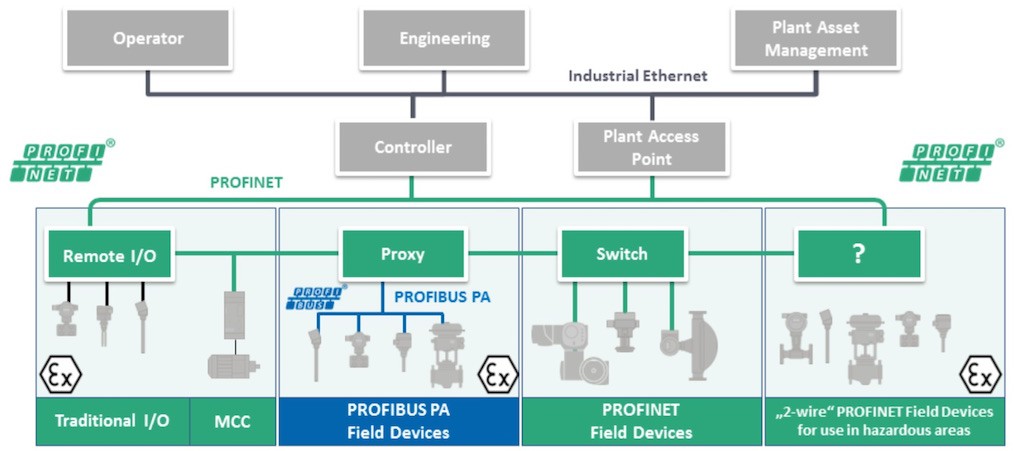Paradigm Shift vs. Opportunity Shift
The industrial move from analog signals to digital fieldbuses was nothing short of a paradigm shift. Instead of running 25 individual wires, with digital fieldbuses, users could run a single cable and truly create a network. Instead of a single scalar value in the range of 4–20 mA, users could now have an actual value—plus units and status information.
If the move from analog to digital fieldbus was a paradigm shift, the move from fieldbus to industrial Ethernet presented an opportunity shift by enabling functions that were not previously possible.
New Use Cases
Like digital fieldbus, industrial Ethernet is about creating an automation network; the difference is that industrial Ethernet expands the network beyond the realm of control engineers. To better understand this difference, consider safety applications. In the past, a separate, dedicated safety system of contactors and relays was required in addition to the existing automation network. Today, all those contactors can be connected to industrial Ethernet, thereby eliminating the extra wiring. Users can also replace many relays with a safety logic controller. And the differences don’t stop there.
Because Ethernet is a commercial technology, industrial Ethernet is an infrastructure that can be used by other devices, thereby making the transmission of large data volumes feasible. Of the industrial Ethernet options on the market, Profinet is currently the only standard that supports the complete real-time spectrum—from hard real-time requirements in high-performance machines (with the necessary openness for IP communication) to the transmission of large data quantities in real time within automation systems and higher-level IT systems.
Hybrid Industries
Proof of industrial Ethernet’s capabilities in industry can be seen in hybrid industry applications. Here, adoption of industrial Ethernet is being driven by the introduction of ever more powerful programmable logic controllers (PLCs), which can replace distributed control systems (DCSs) in some instances. Coupled with the fact that not all of these installations require intrinsic safety (which can be provided by Profibus PA), Ethernet is rapidly growing in popularity as a network backbone.
These hybrid industry installations often lend themselves to the development of “islands of automation,” with each machine performing a specific task. Profinet performs well here, particularly because of the high demand for determinism. In addition, Profinet can be used to link these islands of automation for horizontal integration and provide the data for vertical integration into the enterprise.
Continuous Process Applications
Even in strict continuous process applications where intrinsic safety is required, Ethernet is making inroads. These systems are typically complex in structure, consisting of different subsystems with numerous devices and differing topologies, manufacturers and technologies. Plant owners and operators urgently want this complexity to be harmonized and the data and information systems to be fully integrated and easier to handle. Using an Ethernet-based protocol solves many of these problems by allowing rich metadata to be transferred seamlessly.
In the case of hazardous areas in the continuous processing industries, an example of the industrial Ethernet inroads being made here can be seen in the handling of this data via standardized proxies from Profibus PA to Profinet. Many expect that, in the near future, an intrinsically safe two-wire Ethernet physical layer will become available, thereby removing the need for such proxies. At that point, data transparency will be maximized.
Industrial Internet vs. Industrial Ethernet
As we’ve stated before: “If Industrial Internet is the ‘what,’ then industrial Ethernet is the ‘how.’” That statement still rings true today. By betting on Ethernet-based protocols, we can ensure connectivity—even if we don’t know exactly what the future may hold.
This article appeared originally in Automation World magazine.

